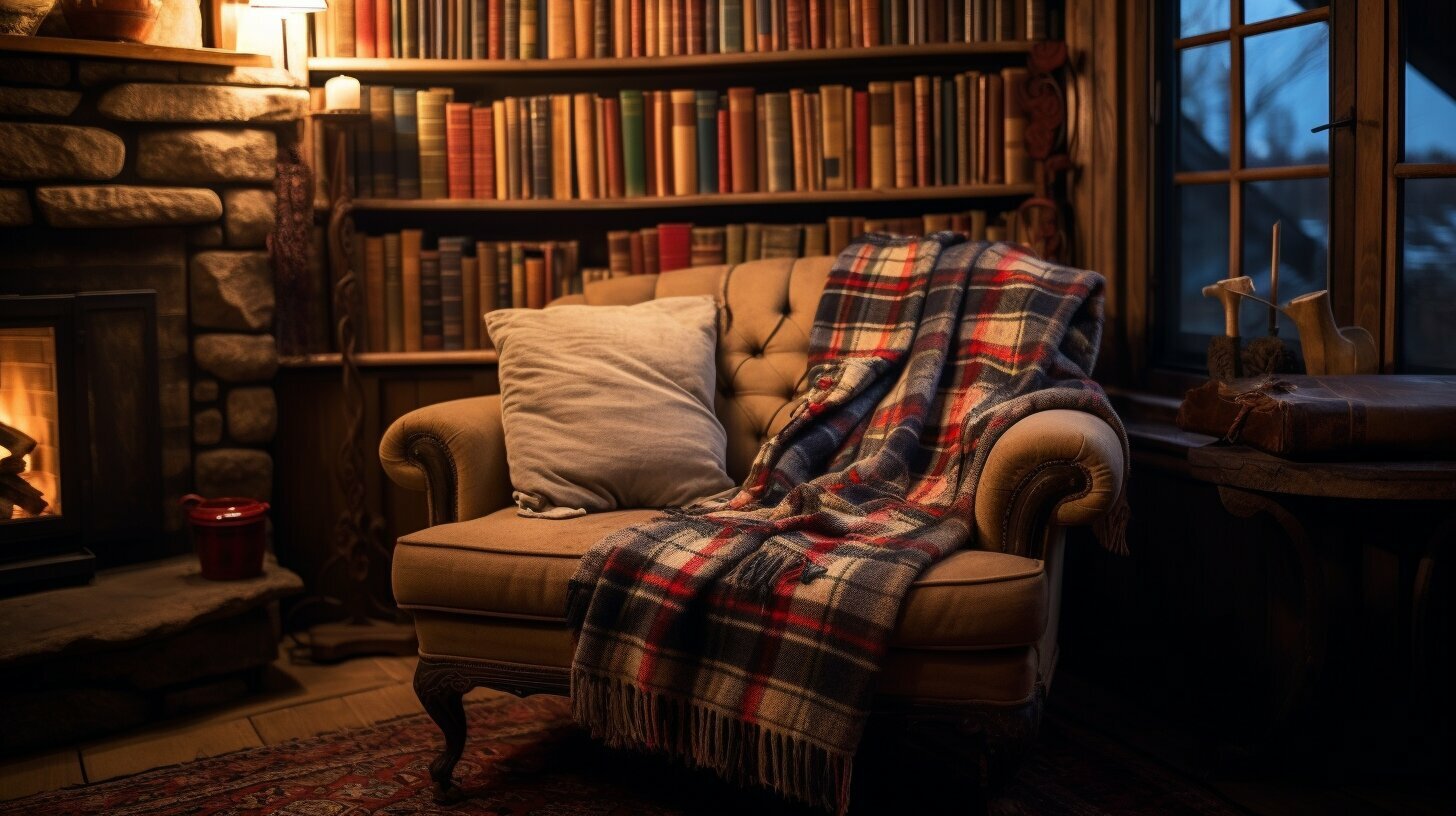I know firsthand the sentimental attachment we can feel towards them. But what do you do with old quilts that have seen better days or no longer fit your decor style? Don’t fret, as there are plenty of creative ways to repurpose old quilts and give them new life. In this article, I’ll share some of my favorite ideas and uses for old quilts, from home decor to fashion and everything in between.
Key Takeaways
- Old quilts can be repurposed in many ways, from home decor to fashion and sentimental keepsakes.
- DIY projects with old quilts are a fun and rewarding way to get creative.
- Proper cleaning and storage techniques can help preserve the beauty and longevity of old quilts.
- Donating or selling old quilts can give them a new home and purpose while giving back to the community.
Repurposing Old Quilts for Home Decor
One of the easiest ways to incorporate old quilts into your home decor is to use them as wall hangings. Not only do they add a cozy and rustic feel to the room, but they also serve as a conversation starter for guests. For a more subtle approach, consider using an old quilt as a table runner or as a throw blanket on your couch or armchair.
If you have a sewing machine and some basic sewing skills, you can transform old quilts into unique and personalized decor pieces. Try making pillow covers or patchwork curtains using sections of the old quilts. You can even create a one-of-a-kind tote bag or picnic basket using the quilt as the fabric.
For a more advanced DIY project, consider repurposing the old quilt into a new quilt or patchwork jacket. This is a great way to preserve the sentimental value of the quilt while giving it new life as a functional and stylish item.
Don’t be afraid to mix and match old quilts with modern decor pieces. The contrast between old and new can create a dynamic and interesting space. And remember, sometimes less is more – a single old quilt hung on a blank wall can make a powerful statement.
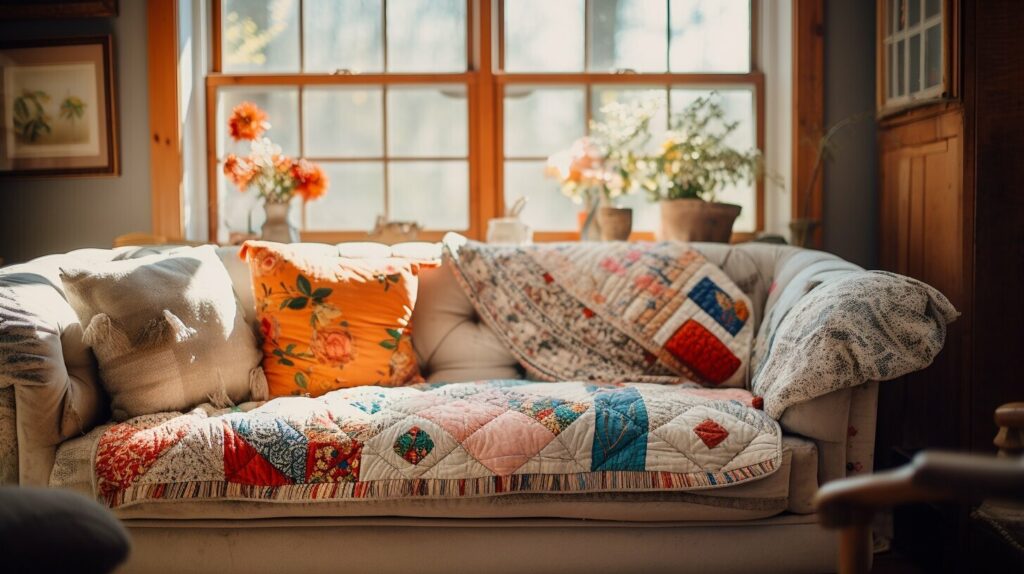
DIY Projects with Old Quilts
If you’re feeling crafty, there are so many fun DIY projects you can do with old quilts. Not only will you be repurposing a sentimental item, but you’ll also be creating something unique and special. Here are a few ideas to get you started:
- Pillows: Cut your old quilt into squares and sew them together to create a patchwork pillow cover. You can even add tassels or pom-poms for extra flair.
- Tote Bags: Use the quilt to create a stylish and functional tote bag. Simply cut two rectangular pieces, sew them together, and add a sturdy strap.
- Quilted Jacket: If you have a particularly large or thick quilt, consider turning it into a cozy quilted jacket. Use a pattern to cut the fabric into the appropriate shapes and sew them together.
- Coasters: Cut small squares or circles from your quilt and use them as coasters. You can even add a layer of interfacing or felt to make them more durable.
Remember to use caution when cutting and sewing the quilt, as it may be delicate or fragile in places.
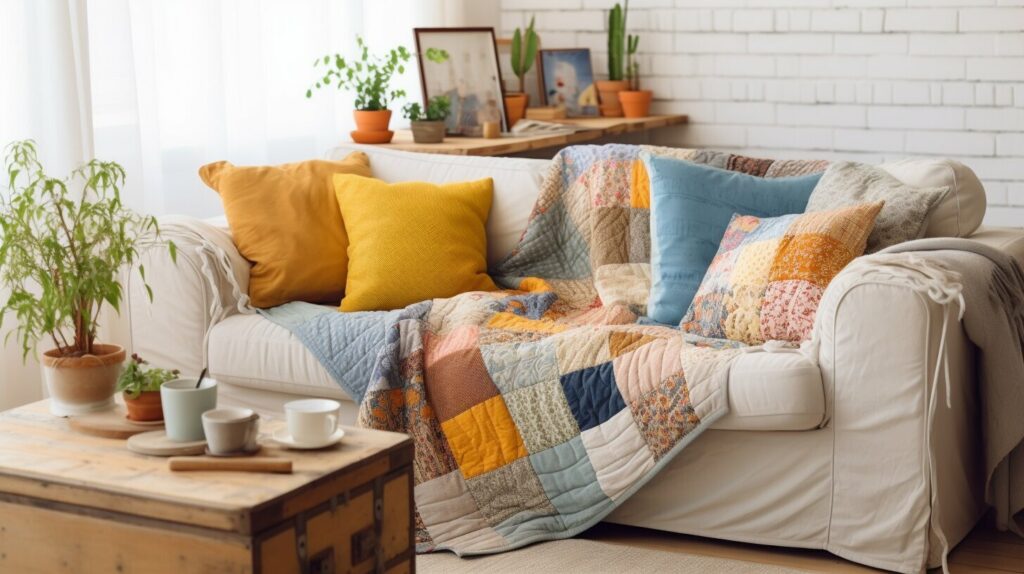
“There is something truly special about turning an old quilt into a new and functional item. I always feel a sense of pride knowing that I’ve given new life to something that might have otherwise been forgotten.”
Upcycling Old Quilts for Fashion and Accessories
If you’re looking to make a fashion statement that’s both unique and eco-friendly, consider upcycling old quilts into trendy accessories. From skirts to handbags, there are so many creative ways to give new life to these vintage textiles.
One popular option is to transform an old quilt into a stylish skirt. Simply cut the quilt into panels and sew them together, creating a one-of-a-kind piece that’s sure to turn heads. Another option is to use smaller sections of the quilt to make a patchwork scarf or handbag. These accessories are perfect for adding a pop of color to any outfit, and the vintage feel of the quilt pieces adds an extra dimension of style.
If you’re feeling particularly ambitious, you can even try your hand at creating a quilted jacket or vest using old quilts. This is a more complex project, but the end result is a truly unique and eye-catching piece that you’ll be proud to wear.
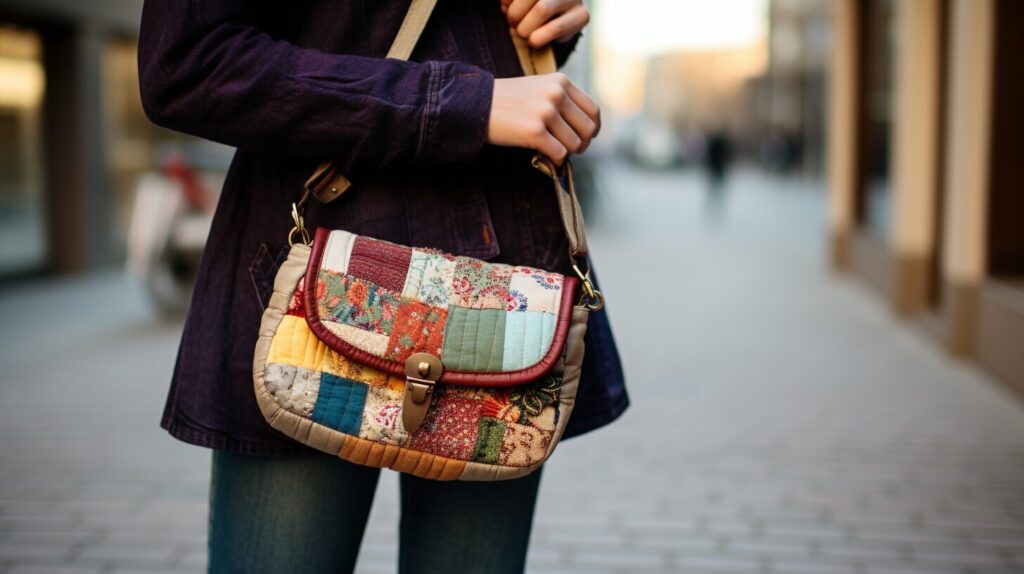
Preserving Old Quilts: Display and Storage Tips
Old quilts are often treasured family heirlooms that have been passed down through generations. The delicate fabrics and intricate stitching make them precious pieces of history that deserve to be properly preserved and displayed. Here are some tips to help you protect your old quilts.
Displaying Old Quilts
When it comes to displaying your old quilts, it’s best to avoid hanging them in direct sunlight or near heat sources. Sunlight can cause the fabric to fade and weaken over time, while heat can cause the stitching to loosen and the fabric to warp or shrink.
Instead, consider hanging your quilt on a wall away from direct sunlight and heat sources. You can use a quilt hanger or rod to display your quilt, which will allow it to hang freely without putting stress on the fabric or stitching.
If you want to use your quilt on a bed or couch, consider folding it and using it as a throw blanket. This will help protect it from wear and tear while also allowing you to enjoy its beauty and warmth.
Storing Old Quilts
Proper storage is essential for preserving old quilts. When storing your quilt, make sure it is clean and free from any dirt or debris that could attract insects or cause damage.
One of the best ways to store a quilt is in a acid-free box or container. These containers will protect the quilt from light, dust, and insects while also allowing it to breathe. You can also use acid-free tissue paper to wrap the quilt before storing it, which will help prevent any creases or folds from becoming permanent.
It’s important to avoid storing quilts in plastic bags or containers, as these can trap moisture and cause the fabric to deteriorate over time.
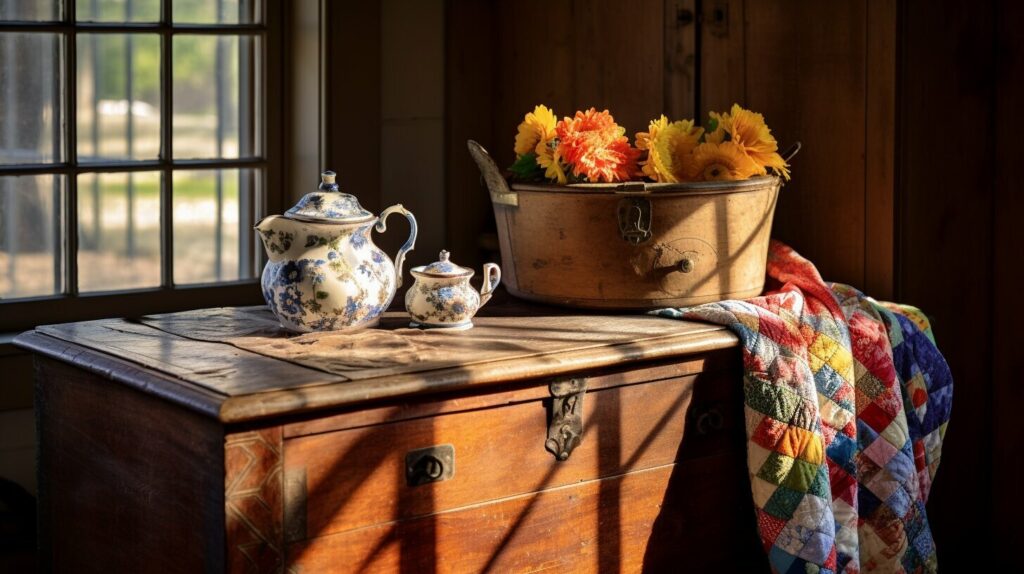
Caring for Old Quilts
Regular cleaning is necessary to keep old quilts looking their best. However, it’s important to take care when cleaning them to avoid causing any damage.
If your quilt is in good condition, you can gently vacuum it using a soft brush attachment to remove any dust or debris. If it’s especially dirty, you can hand wash it using gentle detergent and cool water. Be sure to rinse it thoroughly and avoid wringing or twisting the fabric.
If your quilt is in need of repairs, it’s best to take it to a professional quilt restorer who can repair any tears or loose stitching without causing any further damage.
By following these tips, you can help ensure that your old quilts stay in great condition for many years to come.
Quilting with Vintage Quilts: Updating Old Designs
If you’re a lover of traditional quilts, you’ll know that vintage quilts are a treasure trove of inspiration. The intricate patterns and unique color combinations are a testament to the creativity and skill of quilters of the past. Instead of simply admiring your collection of vintage quilts, why not use them as a starting point for your next quilting project?
One way to update old designs is to experiment with color. Take inspiration from the color scheme of a vintage quilt, but give it a modern twist by swapping out a few colors or adding a bold accent. For example, if you’re working with a vintage Log Cabin quilt that primarily features red and yellow, consider swapping the red for pink and the yellow for a bright green.
Another approach to updating vintage designs is to play with scale. Consider enlarging or shrinking the size of individual blocks in a pattern to create a new look. For example, if you’re working with a vintage Drunkard’s Path quilt, you could enlarge the pieced arcs for a more modern look.
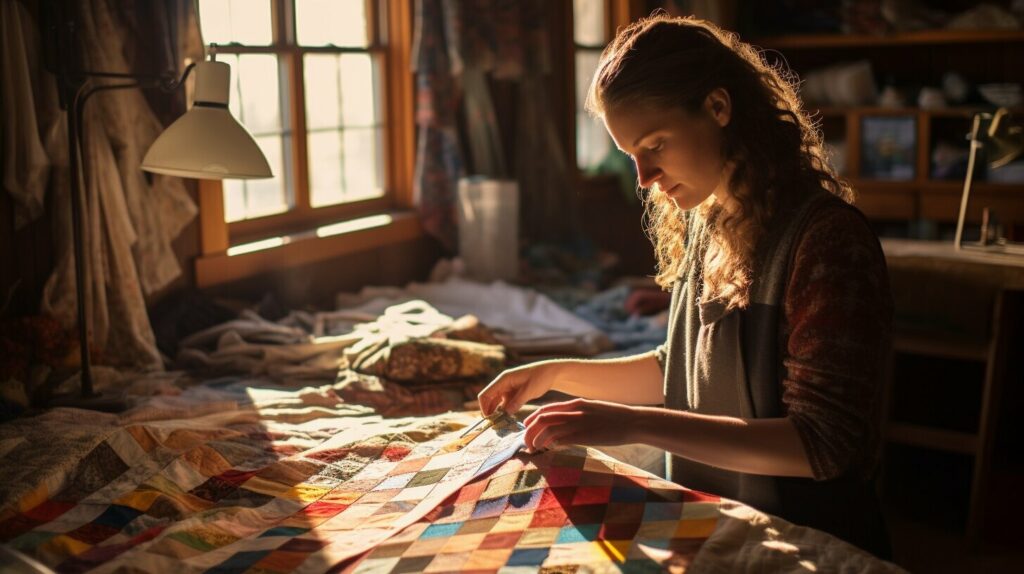
Don’t be afraid to mix vintage and modern elements in your quilting project. You could pair a vintage quilt top with modern backing, or use vintage fabrics in a contemporary pattern. The possibilities are endless!
Of course, it’s important to handle vintage quilts with care. If you’re using a vintage quilt as a source of inspiration, make sure to take good care of it by storing it properly. If you’re working with a vintage quilt top, consider adding a stabilizing layer of fabric to ensure its longevity.
Quilting with vintage quilts can be a fun and rewarding experience. By updating old designs, you can create something truly unique and pay homage to the quilters who came before us.
Selling Old Quilts: Tips for Finding Buyers
As someone who has a passion for old quilts, I know that parting with them can be difficult. However, if you have a collection that you no longer need or want, selling them can be a great way to give them a new home where they will be appreciated.
One option for selling old quilts is through online platforms such as eBay or Etsy. These websites have a wide reach and allow you to showcase your quilts to a large audience. When listing your quilts, be sure to provide detailed descriptions and high-quality photos so that potential buyers can see exactly what they are purchasing.
Another option is to sell your quilts at local markets or craft fairs. These events provide a great opportunity to meet potential buyers in person and share the stories behind your quilts. Be sure to price your quilts appropriately and have a way to accept payments such as a mobile card reader or cash box.
If you have antique quilts in your collection, consider selling them through antique stores or auction houses that specialize in textiles and quilts. These venues have a dedicated customer base who are interested in acquiring unique and rare pieces.
When looking for potential buyers, it’s important to consider the target audience for your quilts. For example, if you have a collection of vintage baby quilts, consider marketing them to new parents or grandparents who are looking for a special gift for a new arrival. By tailoring your marketing efforts to specific audiences, you can increase your chances of finding interested buyers.
Remember, when selling your old quilts, it’s important to be transparent about their condition and any flaws they may have. This will help build trust with potential buyers and ensure that they are satisfied with their purchase.

Donating Old Quilts: Giving Back to the Community
If you have old quilts that you no longer need or want, donating them to charitable organizations is a wonderful way to give back to the community. Your old quilts can provide warmth and comfort to those in need, and they can also be used to raise funds for important causes.
When considering donation, it’s important to research potential organizations and find ones that align with your values and goals. Some organizations may have specific needs or guidelines for accepting donated quilts, so be sure to follow any instructions or requirements they provide.
One great option for donating old quilts is to give them to organizations that serve individuals experiencing homelessness or low-income families. Local shelters and charities may be in need of blankets and quilts to distribute to those in need during colder months, so consider reaching out to them to see if they accept donations.
Another option is to donate your quilts to organizations that support cancer patients or survivors. Quilts can provide comfort and warmth during treatment and recovery, and they can also be used to raise funds for research and treatment programs.
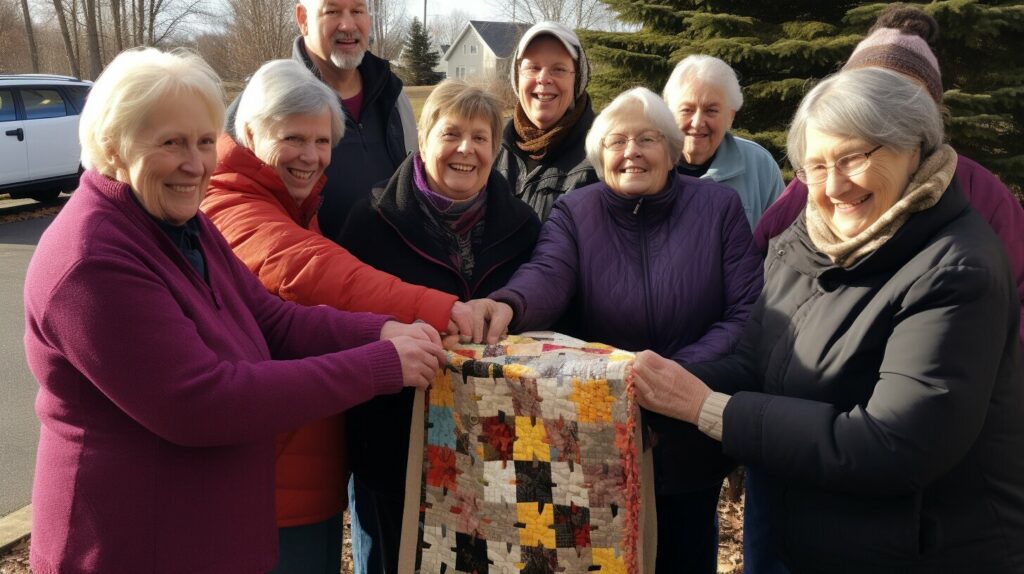
If you have antique or vintage quilts, consider donating them to museums or historical societies. These organizations may be interested in preserving and showcasing your old quilts as part of their exhibit collections.
Donating your old quilts not only helps those in need, but it can also provide a sense of purpose and fulfillment for you as the donor. Knowing that your old quilts are being used to make a positive impact can be a rewarding experience.
Creating Memory Quilts: Honoring Loved Ones
If you have old quilts that have sentimental value because they belonged to a loved one who has passed away, consider creating a memory quilt as a way to honor their memory. Memory quilts are a beautiful way to preserve the legacy of your loved ones and create a heartwarming keepsake that can be passed down through the generations.
To create a memory quilt, first, choose the old quilts that you want to incorporate into the design. You can use the entire quilt or cut out blocks, borders, or other pieces that have special meaning. Arrange the pieces in a way that is visually pleasing and meaningful, considering the color scheme and the placement of any sentimental items like buttons or patches.
Next, you will need to choose a backing fabric and batting to give your memory quilt structure and warmth. You can choose a fabric that matches the old quilts or opt for a complementary color that will enhance the overall aesthetic.
Once you have all the materials, sew the pieces together to form a quilt top. Then, layer the quilt top, batting, and backing fabric together and secure it with pins or basting stitches. Use your sewing machine or hand quilt the layers together to create a finished quilt.
Your memory quilt can be as simple or intricate as you want it to be, but the sentimentality behind it is what truly matters. You can display it on a wall or use it as a throw blanket, cherishing the memories of your loved ones each time you see or use it.
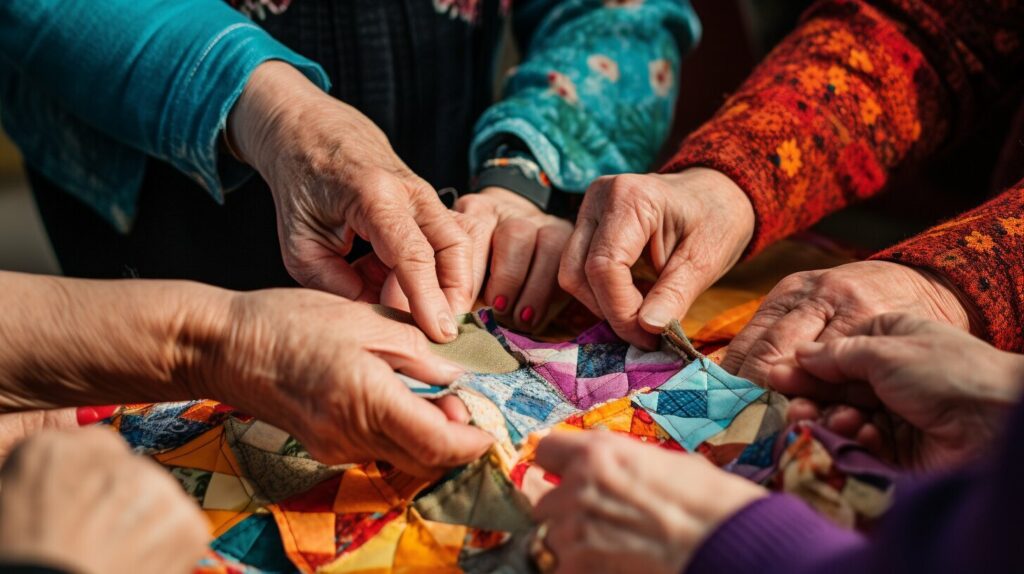
Tips for Cleaning and Repairing Old Quilts
If you have old quilts that have been passed down through generations or found at a thrift store, you may want to give them some love and care to keep them in great condition. Here are some tips for cleaning and repairing old quilts:
- Inspect the quilt carefully: Before cleaning or repairing the quilt, examine it closely to determine any areas of damage or weakness. Do not attempt to clean or repair a quilt with delicate or fragile areas unless you are a professional.
- Wash with care: If your quilt can be washed, use a mild detergent and cold water to gently clean it. Do not use bleach or fabric softeners, and avoid wringing or twisting the quilt. Rinse thoroughly and lay it flat to dry, away from direct sunlight.
- Spot clean stains: For small stains or spots, use a gentle stain remover and a soft cloth to dab the spot. Do not rub the stain, as this can damage the fabric.
- Repair small tears: For small tears or holes in the quilt, use a needle and thread to carefully stitch the area together. Use a thread that matches the quilt’s color and stitch in a manner that is consistent with the quilt’s original stitching.
- Consult a professional: For larger tears, missing pieces, or other damage, it is best to consult a professional textile conservator or a quilt restoration expert to repair the quilt.
By taking care of your old quilts, you can ensure their beauty and longevity for future generations to enjoy.
Conclusion
As you can see, there are countless ways to repurpose old quilts and unleash your creativity at the same time. Whether you decide to use them as home decor, clothing, or quilting inspiration, there’s no denying the charm and history that old quilts bring to any project.
When thinking about what to do with old quilts, it’s important to also consider their preservation and how to honor their sentimental value. Whether it’s through donating or creating memory quilts, these pieces can hold a special place in the hearts of families for generations to come.
By following some of the tips and ideas presented in this article, you can breathe new life into old quilts and continue to appreciate their beauty and legacy.

